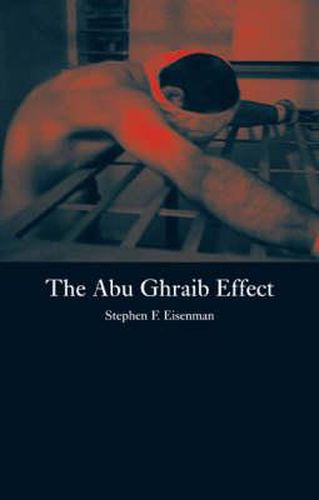Readings Newsletter
Become a Readings Member to make your shopping experience even easier.
Sign in or sign up for free!
You’re not far away from qualifying for FREE standard shipping within Australia
You’ve qualified for FREE standard shipping within Australia
The cart is loading…






The line between punishment and torture can be thin, but the entire world agreed it was crossed at Abu Ghraib. Or did it? George W. Bush emerged from the scandal relatively unscathed, winning a second term months later, only a few low-ranking soldiers involved in the crimes were prosecuted, and the issue went almost entirely unmentioned during the mid-term elections in 2006. Where was the public outcry? Why was the American public largely unmoved by the images of torture and humiliation? Stephen F. Eisenman posits an unsettling explanation, which is rooted in the character of the Abu Ghraib photographs themselves. Eisenman argues that the complex of violent and sexual motifs found in the photographs constitutes the Abu Ghraib effect’, an instance of a longstanding Western pathos formula’, whereby victims are shown taking pleasure in their own chastisement and pain. The cruel formula is widespread in the history of art and visual culture from Hellenistic Greece to modern times, and generally serves as an instrument of imperialist self-justification and racist violence. But Eisenman also argues that it has not gone unchallenged. Artists from Hogarth and Goya to Picasso and Leon Golub, as well as other dissidents, have worked assiduously to undermine this vicious tradition of torture images. By identifying the pathos formula at work in the Abu Ghraib images, and by explaining how this insidious form of visual propaganda has been resisted, Eisenman points the way towards a more effective use of political images in the war against the war on terror.
$9.00 standard shipping within Australia
FREE standard shipping within Australia for orders over $100.00
Express & International shipping calculated at checkout
The line between punishment and torture can be thin, but the entire world agreed it was crossed at Abu Ghraib. Or did it? George W. Bush emerged from the scandal relatively unscathed, winning a second term months later, only a few low-ranking soldiers involved in the crimes were prosecuted, and the issue went almost entirely unmentioned during the mid-term elections in 2006. Where was the public outcry? Why was the American public largely unmoved by the images of torture and humiliation? Stephen F. Eisenman posits an unsettling explanation, which is rooted in the character of the Abu Ghraib photographs themselves. Eisenman argues that the complex of violent and sexual motifs found in the photographs constitutes the Abu Ghraib effect’, an instance of a longstanding Western pathos formula’, whereby victims are shown taking pleasure in their own chastisement and pain. The cruel formula is widespread in the history of art and visual culture from Hellenistic Greece to modern times, and generally serves as an instrument of imperialist self-justification and racist violence. But Eisenman also argues that it has not gone unchallenged. Artists from Hogarth and Goya to Picasso and Leon Golub, as well as other dissidents, have worked assiduously to undermine this vicious tradition of torture images. By identifying the pathos formula at work in the Abu Ghraib images, and by explaining how this insidious form of visual propaganda has been resisted, Eisenman points the way towards a more effective use of political images in the war against the war on terror.